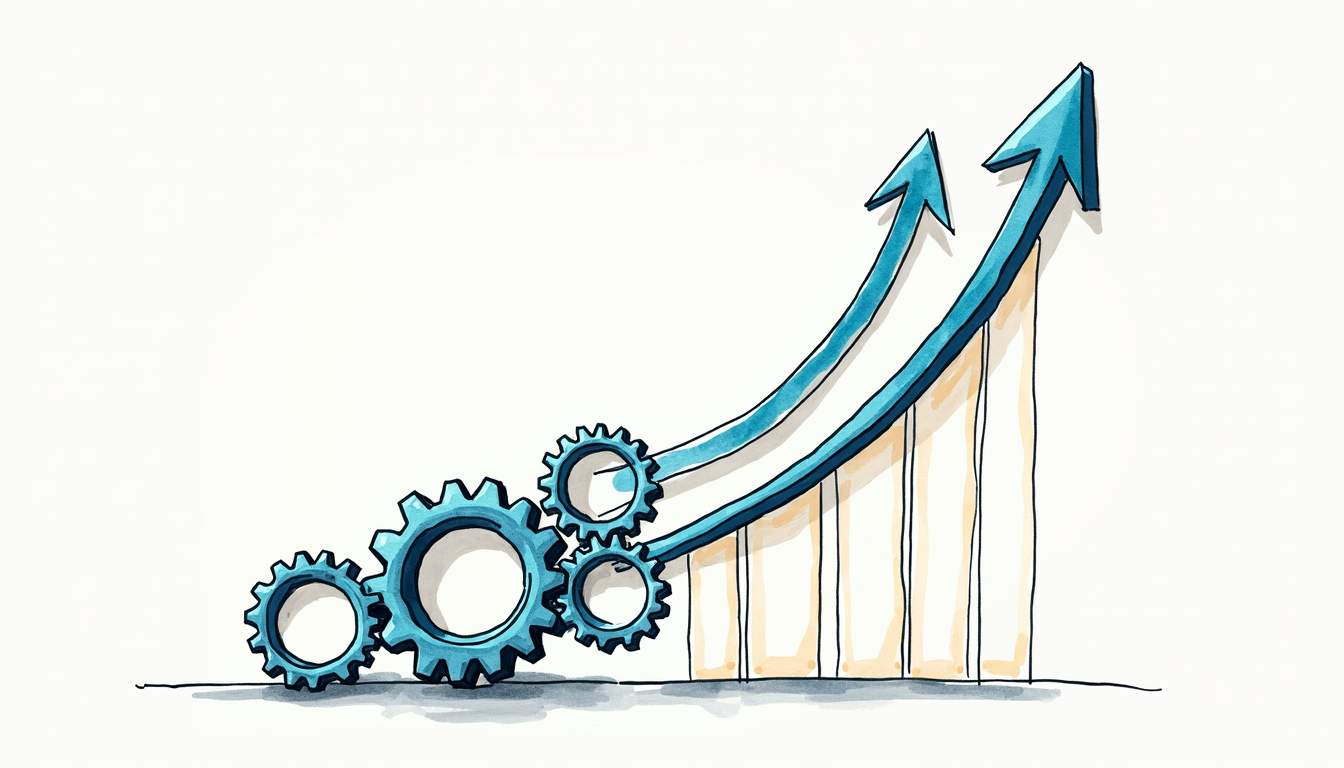In today’s fast-paced business environment, aligning your company’s sales goals with operational capabilities isn’t just good practice—it’s essential for survival. Sales and Operations Planning (S&OP) serves as the bridge between ambitious revenue targets and the practical reality of what your organization can deliver. Yet despite its importance, many companies struggle to implement an effective S&OP process that truly drives strategic alignment and business growth.
Whether you’re new to S&OP or looking to refine your existing process, this guide will walk you through the fundamentals, benefits, and best practices of creating a robust S&OP framework that transforms planning from a necessary evil into a competitive advantage.
Understanding the Fundamentals of S&OP
At its core, Sales and Operations Planning is a monthly integrated business management process that empowers leadership to focus on key supply chain drivers, including sales, marketing, demand management, production, inventory management, and new product introduction. The goal? To keep demand and supply in balance while connecting strategic plans to daily operations.
Effective S&OP isn’t just about matching numbers on spreadsheets. It’s about creating a rhythm of business that ensures everyone from the C-suite to the shop floor understands how their decisions impact the broader organization. When done right, S&OP becomes the heartbeat of your business planning cycle.
The Five-Step S&OP Process
Most successful S&OP implementations follow a five-step monthly cycle that has become the industry standard. It begins with data gathering and ends with an executive S&OP meeting where key decisions are made. Here’s the breakdown:
First, the product management review assesses new product introductions and discontinuations. Next comes demand planning, where sales forecasts are developed and refined. The supply planning phase follows, determining the operational capacity to meet projected demand. The pre-S&OP meeting (sometimes called a “consensus meeting”) reconciles gaps between demand and supply plans. Finally, the executive S&OP meeting makes critical business decisions based on the options presented.
This cyclical process creates a continuous improvement loop that becomes more valuable with each iteration as your organization learns and adapts.
Key Participants and Their Roles
Successful S&OP requires cross-functional participation. Sales brings market intelligence and customer insights. Operations contributes capacity constraints and production capabilities. Finance provides the financial lens and P&L implications. Product management offers product lifecycle information. And executive leadership makes the final calls on trade-offs that balance customer service with financial performance.
The most effective S&OP processes also include representatives from procurement, logistics, and human resources to ensure all aspects of supply chain execution are considered. Remember, S&OP isn’t just a supply chain initiative—it’s a business process that requires input from across the organization.
Benefits of a Well-Executed S&OP Process
When properly implemented, S&OP delivers tangible benefits that impact both top and bottom lines. Companies with mature S&OP processes typically see 15-20% reductions in inventory, 10-15% improvements in on-time delivery, and 5-7% increases in revenue. These aren’t just operational improvements—they translate directly to enhanced shareholder value.

Beyond the numbers, effective S&OP creates organizational alignment that’s difficult to achieve through other means. It breaks down silos, creates transparency, and builds a culture of accountability where commitments are made publicly and tracked consistently.
Improved Forecast Accuracy
One of the most immediate benefits of S&OP is improved forecast accuracy. By bringing together multiple perspectives and data points, organizations typically see forecast errors decrease by 30-40% within the first year of implementation. This improvement comes from combining statistical forecasting with market intelligence and formalizing the process of forecast review and adjustment.
Better forecasts mean fewer surprises, more stable production schedules, and appropriate inventory levels. For companies in volatile markets, this benefit alone can justify the investment in developing a robust S&OP process.
Enhanced Decision-Making
S&OP creates a structured framework for making complex business decisions. Instead of reactive, siloed choices, organizations gain the ability to evaluate trade-offs holistically. Should you increase production capacity or manage demand? Accept a large order that exceeds current capabilities or negotiate different delivery terms? Launch a new product now or delay until operational readiness improves?
These decisions become clearer when all relevant information is on the table and the cross-functional implications are visible. The result is better decisions made faster, with buy-in from all stakeholders.
Financial Performance Improvements
Perhaps most compelling is S&OP’s impact on financial performance. By aligning supply and demand, companies reduce both stockouts and excess inventory—directly improving cash flow. Production becomes more efficient as schedules stabilize. Customer satisfaction increases as on-time delivery performance improves. And sales teams can sell with confidence knowing what the organization can realistically deliver.
These operational improvements translate to financial gains: higher revenues, lower costs, and improved asset utilization. For publicly traded companies, this often means beating earnings expectations and increasing shareholder value.
Common Challenges and How to Overcome Them
Despite its benefits, implementing effective S&OP isn’t without challenges. Many organizations struggle with similar obstacles on their journey to S&OP maturity. Recognizing these common pitfalls can help you navigate around them.

The good news? These challenges are well-documented and solutions exist for each. With proper planning and executive sponsorship, your organization can avoid the typical implementation struggles and accelerate your path to S&OP excellence.
Siloed Thinking and Departmental Resistance
Perhaps the most persistent challenge is overcoming departmental silos and the “that’s not how we do things” mentality. Sales may resist sharing detailed forecasts, fearing they’ll be held to them as commitments. Operations might be reluctant to expose capacity limitations. Finance often questions the value of the time investment required.
Addressing this challenge requires strong executive sponsorship and clear communication about why S&OP matters. Start by creating a compelling case for change that resonates with each functional area. Show sales how better operational alignment means fewer disappointed customers. Demonstrate to operations how improved forecasts lead to more stable production schedules. Help finance understand how better planning reduces working capital requirements.
Data Quality and System Integration Issues
Many S&OP implementations stumble over data problems. Different departments use different systems, metrics don’t align, and manual data manipulation creates errors and delays. The planning process becomes bogged down in data reconciliation rather than focusing on decision-making.
While technology isn’t a silver bullet, investing in integrated planning systems can significantly reduce this friction. Start by defining common data definitions and metrics. Create a single source of truth for key planning data. And remember that perfect data isn’t required to begin—you can improve data quality iteratively as your process matures.
Lack of Discipline and Process Adherence
S&OP requires discipline—meetings must happen on schedule, participants must come prepared, and decisions must be documented and tracked. In organizations with fluid cultures or competing priorities, maintaining this discipline can be challenging.
The solution lies in creating accountability at all levels. Executive sponsors should attend S&OP meetings consistently, demonstrating its importance. Meeting cadence should be protected even during busy periods. And the process should deliver enough value that participants want to attend rather than feeling forced to participate.
Implementing S&OP: A Roadmap to Success
Implementing S&OP isn’t a project with a defined endpoint—it’s a journey of continuous improvement. Most organizations evolve through several maturity stages, from basic demand-supply balancing to fully integrated business planning that drives strategy execution.
Regardless of your starting point, certain implementation principles apply universally. Following this roadmap will help you avoid common pitfalls and accelerate your path to S&OP maturity.
Securing Executive Sponsorship
Successful S&OP implementation requires active executive sponsorship—not just approval. Your executive sponsor (ideally the CEO or COO) needs to understand the process, communicate its importance, participate in key meetings, and hold people accountable for their commitments.
Start by educating your executive team on S&OP benefits and requirements. Use case studies from your industry to demonstrate the potential value. And be clear about the time commitment required, both during implementation and as part of the ongoing process.
Designing Your Process
While the five-step S&OP framework provides a starting point, your specific process needs to reflect your business realities. A make-to-stock consumer goods company will have different planning needs than a project-based professional services firm.
Begin by defining your planning horizons, meeting cadence, and key participants. Determine how you’ll handle different product families or business units. And establish clear decision rights—who can make what decisions at each stage of the process. Document this design in a simple playbook that guides implementation and serves as a training tool for new participants.
Starting Small and Scaling Gradually
Rather than attempting a big-bang implementation across your entire organization, consider starting with a pilot in one business unit or product family. This allows you to refine the process, demonstrate value, and create internal champions before scaling more broadly.
Your pilot should include all five S&OP steps but might use simplified tools and metrics. Focus on getting the rhythm right and making real decisions, even if your data and systems aren’t perfect. Once the pilot demonstrates value, you can expand to additional business units while simultaneously deepening your capabilities in areas like scenario planning and financial integration.
Measuring S&OP Effectiveness
As management guru Peter Drucker famously said, “What gets measured gets managed.” This certainly applies to S&OP. Without clear metrics, it’s difficult to know whether your process is delivering value or where improvements are needed.

Effective measurement goes beyond tracking meeting attendance or completion of process steps. It should focus on outcomes—is S&OP helping your business perform better? Are decisions being made and executed effectively? Is the process becoming more valuable over time?
Key Performance Indicators for S&OP
Start by measuring forecast accuracy—both at aggregate levels and by key product families. Track inventory performance against targets, service level achievement, and production plan adherence. These operational metrics provide immediate feedback on whether your demand and supply plans are realistic and achievable.
As your process matures, add financial metrics like revenue attainment versus plan, margin performance, and cash flow impacts. The ultimate measure of S&OP effectiveness is whether it helps your organization achieve its strategic objectives while maintaining operational excellence.
Remember to measure both process adherence (are we following the process consistently?) and process outcomes (is the process delivering value?). Both dimensions matter for sustainable S&OP success.
Conclusion: The Journey to S&OP Excellence
Sales and Operations Planning isn’t just another business process—it’s a fundamental shift in how organizations align, plan, and execute. When done well, it creates a rhythmic cadence that connects strategy to daily operations, breaks down functional silos, and enables better decision-making at all levels.
The journey to S&OP excellence takes time and persistence. You’ll face challenges, from data quality issues to cultural resistance. But the rewards—improved customer service, reduced costs, enhanced financial performance, and greater organizational alignment—make the effort worthwhile.
Start where you are, with the resources you have. Focus on creating value rather than process perfection. And remember that S&OP is ultimately about making better decisions that balance customer needs with business realities. Master this balance, and you’ll create a powerful competitive advantage that drives sustainable growth.
